The Ultimate Guide for Success With Advertising on Youtube!
YouTube has acquired more than a billion users today. That’s about one-third of all users on the Internet — and they stream a billion hours of content a day, creating billions of views. It is a lot of ‘billions.’
What’s more, YouTube alone can reach more than 18-49 years of age than any cable network in the US. Yet that’s not half of it. According to the ‘State of Video Marketing in 2018’ report, 81 % of people are convinced that they can buy a product or service by watching a video of a brand. Besides, 76% of businesses report the video has helped them increase their revenue.
And it’s no surprise video marketing is on the rise. If you’re dying to learn how to tap into the enormous force of video marketing, this post is for you. Next, you’ll hear about YouTube advertisements and the various styles of YouTube ads that will be available in 2021.
Then I’m going to teach you how to set up and customize your first YouTube advertisement campaign. Finally, we’ll explore those YouTube tricks that will help you make a difference in your YouTube ads. Let’s just jump right in.
What benefits can YouTube Advertising bring?
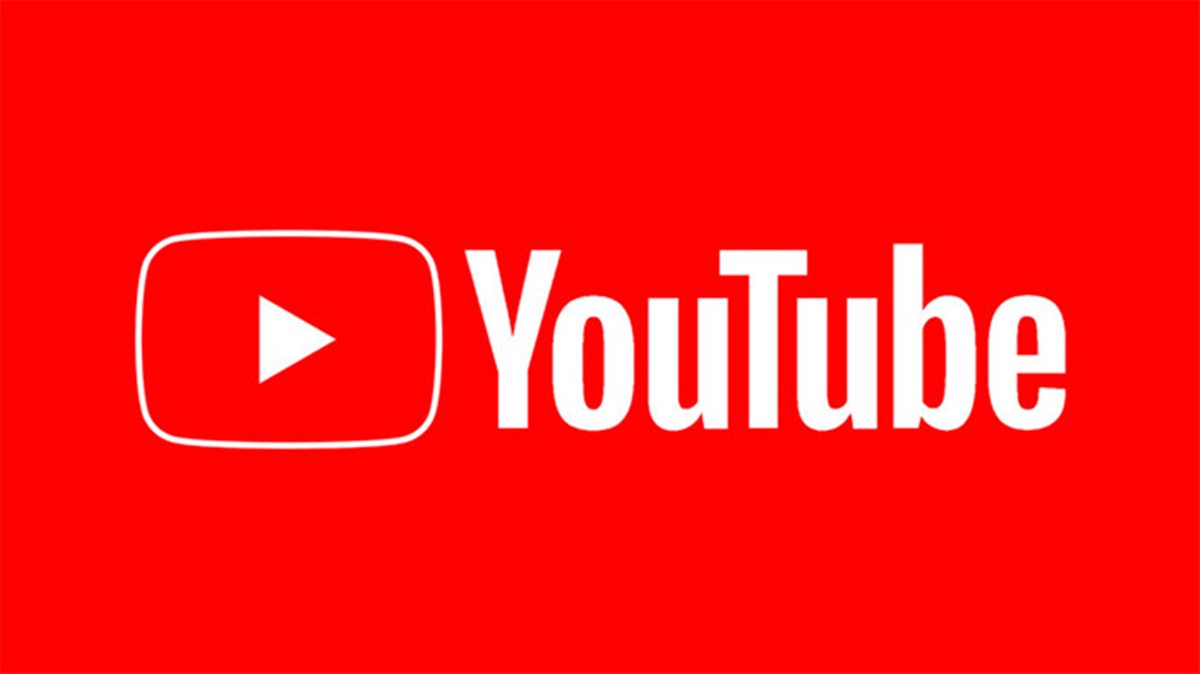
The cost of YouTube advertising can be a challenge for small businesses, especially if your core business is dropshipping. This might be because you don’t have a lot of capital to invest in, or maybe you don’t see the ad revenue you expected from other advertising platforms, such as social media advertising.
Also Read: 9 YouTube Tips to Improve Your YouTube Channel SEO
Yet YouTube ads rely on a different type of video, with a very different means of reaching viewers. If your audience is more engaged with video content than other types of content, then YouTube Advertising is the greatest medium for churning out ad revenue.
1. Reach
Because of the fact that YouTube has more than 1 billion users on the platform and more than 1 billion unique visits per month, YouTube advertising has the potential to reach a large percentage of the population when highly engaged.
2. Targeting
As part of the giant Google, YouTube has a wealth of information that only Twitter can compare with. An understanding of human needs and desires will help you attract the right audiences for your YouTube advertising. Be careful not to over-optimize your ad targeting, as well as over-limit your reach.
3. Data
The reports you receive during your advertising campaigns will be in-depth and provide information about your ads and those who engaged with them. Get to know the audience who is engaged with your content. What content did they like before they went to buy something from your store? To get more information, connect your Google Ads and Analytics accounts together.
4. Users
When a person visits your website and shows interest in your company, don’t wait for them to come back again – establish a relationship with them. Done via the Google Suite, remarketing can help you target people with ads when they visit your website, which means that you can bring them back to your website, build trust with them, and hopefully make a sale in the future.
5. Flexibility
YouTube advertising is not static; it’s always evolving, and so will the advertisements. You should change your scheduling, ad plan, ad copy, etc. in real-time to make sure you get the best out of your YouTube advertisement budget. Tailor your ads to evolve over time as your audience does.
Recommend:
How to make a youtube channel?
How to Change Your Custom Youtube URL?
The Best Video Format for Youtube?
Types of YouTube ads
To begin with, let’s have a look at the four main types of ads on YouTube, both video and non-video:
- Type 1: Skippable in-stream ads
- Type 2: Non-skippable in-stream ads (including bumper ads)
- Type 3: Video discovery ads (formerly known as in-display ads)
- Type 4: Non-video ads (i.e., overlays and banners)
If you’ve spent time fine-tuning your YouTube marketing plan, you ‘re definitely familiar with most of these formats because you’ve seen them in practice. But we’re going to walk through and take a gander to the details.
1. Skippable in-stream video ads
This form of advertisement is played before or after a video (e.g. “pre-roll” or “mid-roll”). Their distinguishing characteristic is that audiences can opt to skip them after the first 5 seconds.
As an advertiser, you pay only when viewers choose to keep viewing after the first five seconds. Your ad must be at least twelve seconds long (though less than 3 minutes is recommended). You pay when a person sees the first 30 seconds or the entire thing, or when they connect with your ad by clicking: whichever comes first.
Sidebar: You’ll see a lot of the term “TrueView” pop up. TrueView is a form of ads where the payment for an ad experience only happens when the customer wants to view it.
Take a peek, for example, at how Kickstarter uses skippable in-stream ads for lead production. To the right, there’s a 5-second countdown where the user can skip the commercial. On the left, you can easily see how long the ad is (0:33 seconds, in this case).
Meanwhile, their CTA sign-up appears in both the companion banner at the top right of the display and the video overlay at the bottom left. (Note that even if the viewer skips the video, the banner of the companion will remain.)
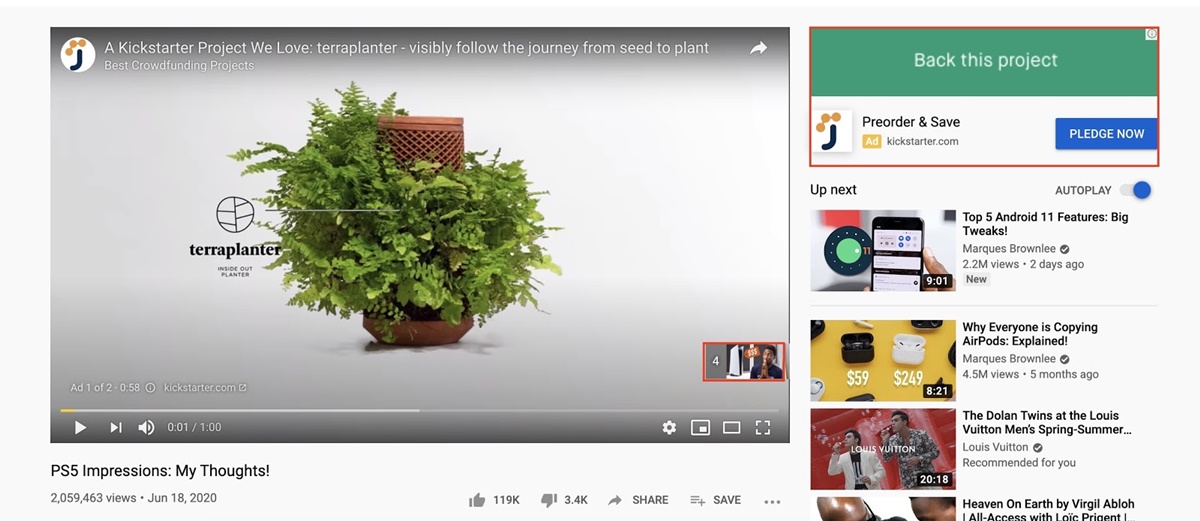
Likewise, the B2C online education brand MasterClass uses skippable in-stream pre-roll ads to promote their membership. Yet they’re going long: this one’s nearly two minutes out.
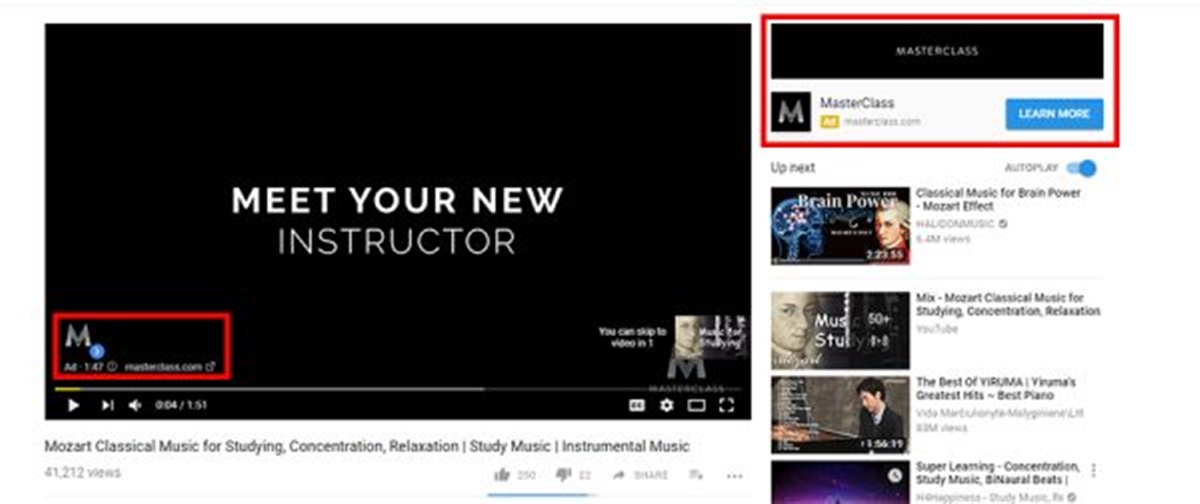
2. Non-skippable in-stream video ads
Because 76 % of people report that they skip ads automatically, some advertisers choose to run pre-roll or mid-roll ads that don’t have a skip button at all. When are you supposed to do this? When you’re aiming for a broad lift in brand awareness, and you’re confident that your creativity is strong enough to hold your audience’s attention for 15 seconds.
Remember that for non-slip advertising, advertisers pay per print at CPM (i.e. per 1,000 views). Or for up to 20 seconds if you’re in India, Malaysia, Mexico, Singapore, or EMEA in general.
Bumper ads
For a period of 6 seconds, bumper ads are a snappy subspecies of non-skippable in-stream ads. They’re the same as you pay for views, they turn up as pre-, mid-or post-roll, and they’re usually better used for awareness campaigns.
3. Discovery ads
Whereas in-stream advertisements are more like a typical TV advert, discovery advertisements are something like advertising on Google’s search results page. (This makes sense because we note that YouTube is just as much a search engine as a sharing platform.)
Discovery advertisements run alongside organic search results. And if your video is more interesting than organic performance, viewers may opt to watch it instead. Discovery Ads include three lines of text along with a thumbnail. Once curious people click on the ad, they will be sent to your video page or YouTube channel.
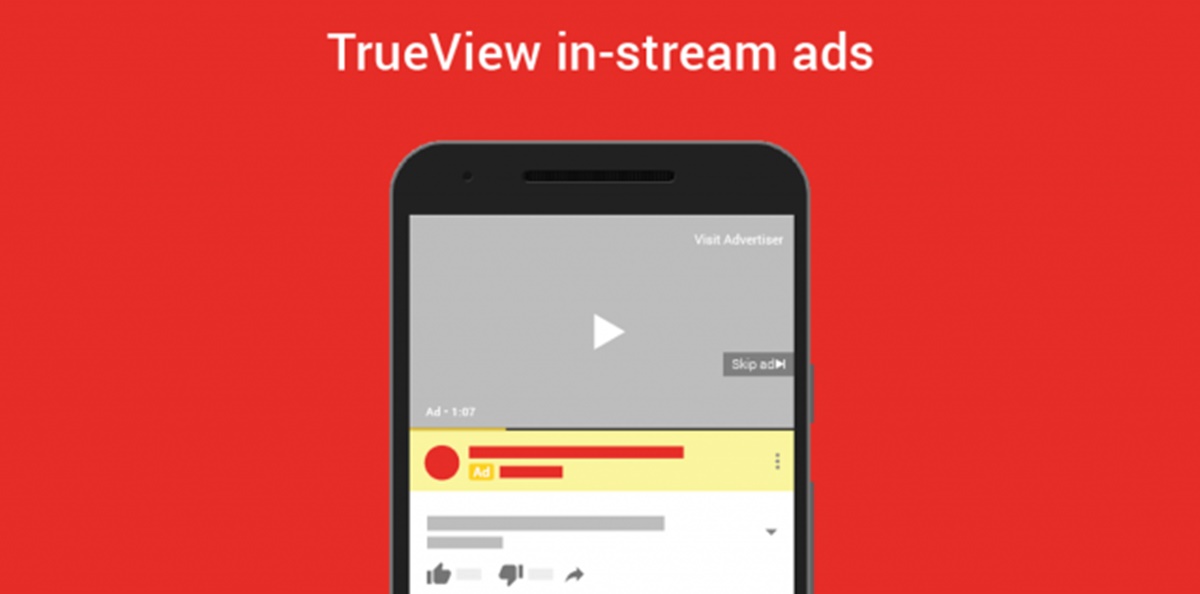
Sidebar: Discovery advertisements are also a form of TrueView ad since viewers need to want to view them consciously. For example, Home Depot Canada has a set of 30-second exploration advertisements that appear as users type in the appropriate search terms:

4. Non-video ads
YouTube offers non-video ads to advertisers without a decent budget to do videos.
- Display ads: these ads appear on the right-hand sidebar, and include an image and text, along with a CTA link to your website.
- In-video overlay ads: these ads show up on the screen of the video that you’re watching.
In the ideal world, these two ad types appear in conjunction with related content. For example, that isn’t always the case. For example, this helpful osteopathic shoulder exercise video may generally fall under “health,” and perhaps so do these ads for herbal remedies and MRIs. Of reality, the odds of the audience being involved in all three of them are slim. This is a great argument to be picky about targeting your audience.
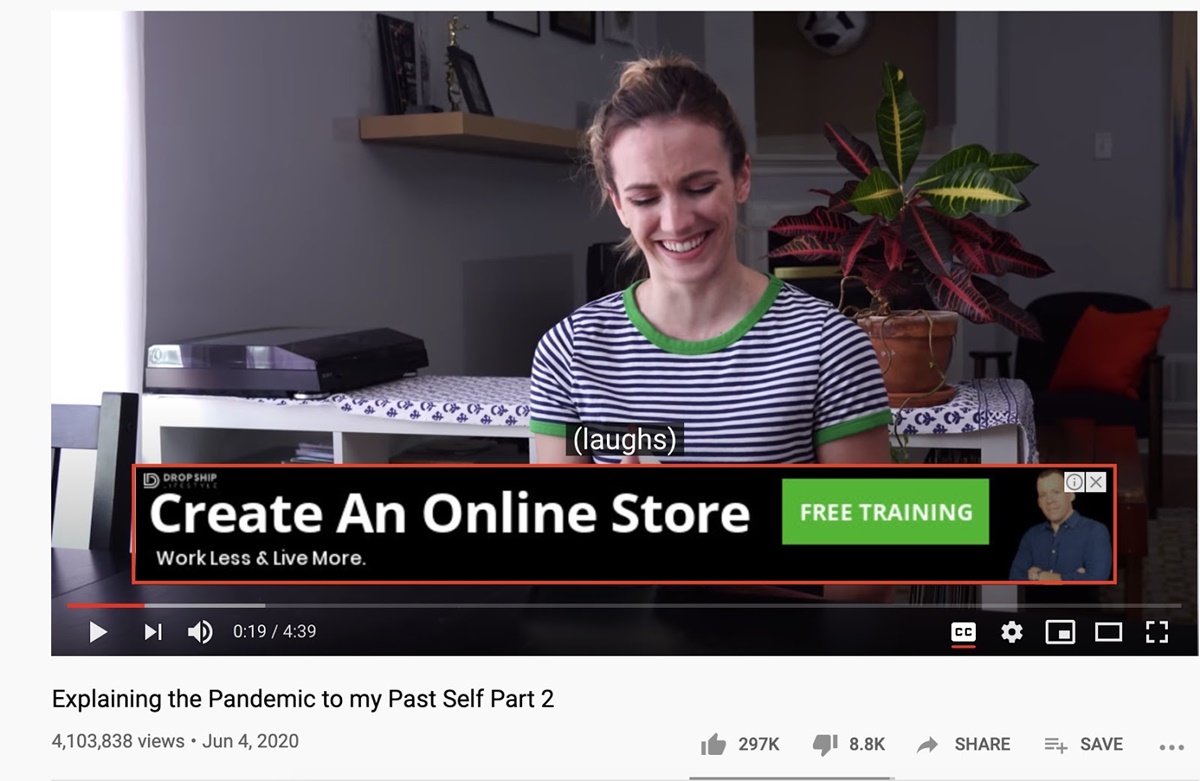
Related posts:
How to See Your Subscriber on YouTube?
How to Message Someone on YouTube?
How Much Do YouTube Ads Cost?
Price is, of course, one of the main considerations when it comes to ads. YouTube has a great reputation for fair costs, especially since you pay only when viewers watch your video ad for 30 seconds or more (or in its entirety if it is less than 30 seconds) or when they click on it (this applies to both ads in the form of video and images).
The cost of your ad depends on a number of different factors, such as targeting and the competitiveness of the industry you are in.
For e.g., if you want to target females aged 18-80 with interest in make-up, that’s a huge range and a really competitive market, and the cost per view would be greater than, say, whether you choose to target females aged 18-25 with interest in black eyeliner – a far narrower market.
YouTube advertisements have an estimated cost of $0.10 – $0.30 per view. But the approximate expense of reaching 100,000 people is around $20,000. The good news is that there is no minimum cost on YouTube ads – CPV bids start at as low as $0.01. You’re only setting a regular target that you’re happy with, so you can change it according to your campaign outcomes.
The bottom line is that there is no straightforward answer to the question: how much does YouTube advertising cost? And with every ad, it’s a unique case. Now that you know the average CPV and how to keep prices down by planning, you should have a better idea of how much you are willing to spend.
Three steps of how to advertise on YouTube: Setup, Targeting & Launch
Advertising on YouTube is a three-stage process:
- Stage 1: Setup
- Stage 2: Targeting
- Stage 3: Launch
When you set up a video ad, go to YouTube Ads, and choose “Start now”. A new tab will open, which will take you to this article, describing the three steps needed to start advertising on YouTube:
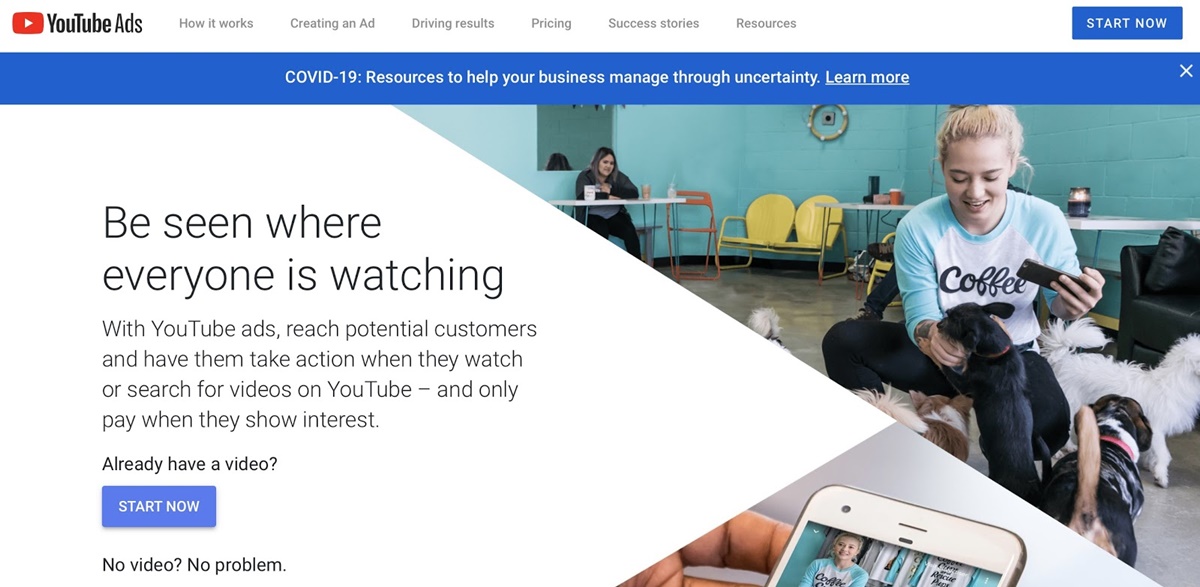
Here, you can upload your video ad if it’s not uploaded to YouTube. When you’re happy to continue, choose “Get Started” to go to Google Ads and ask that you paste the URL of your video to the search bar:
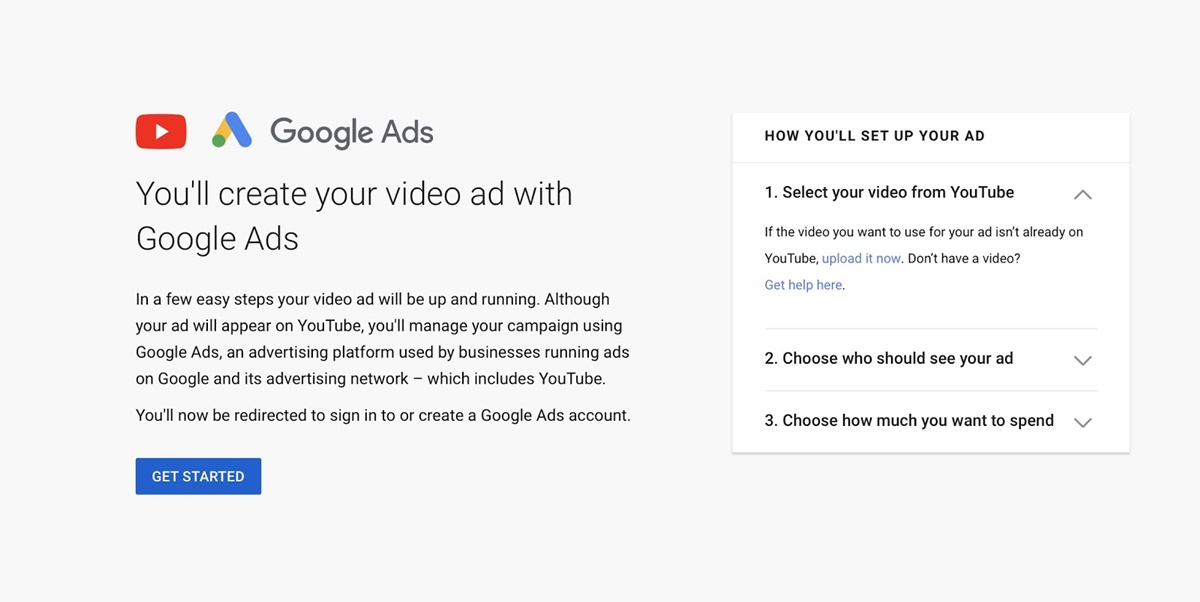
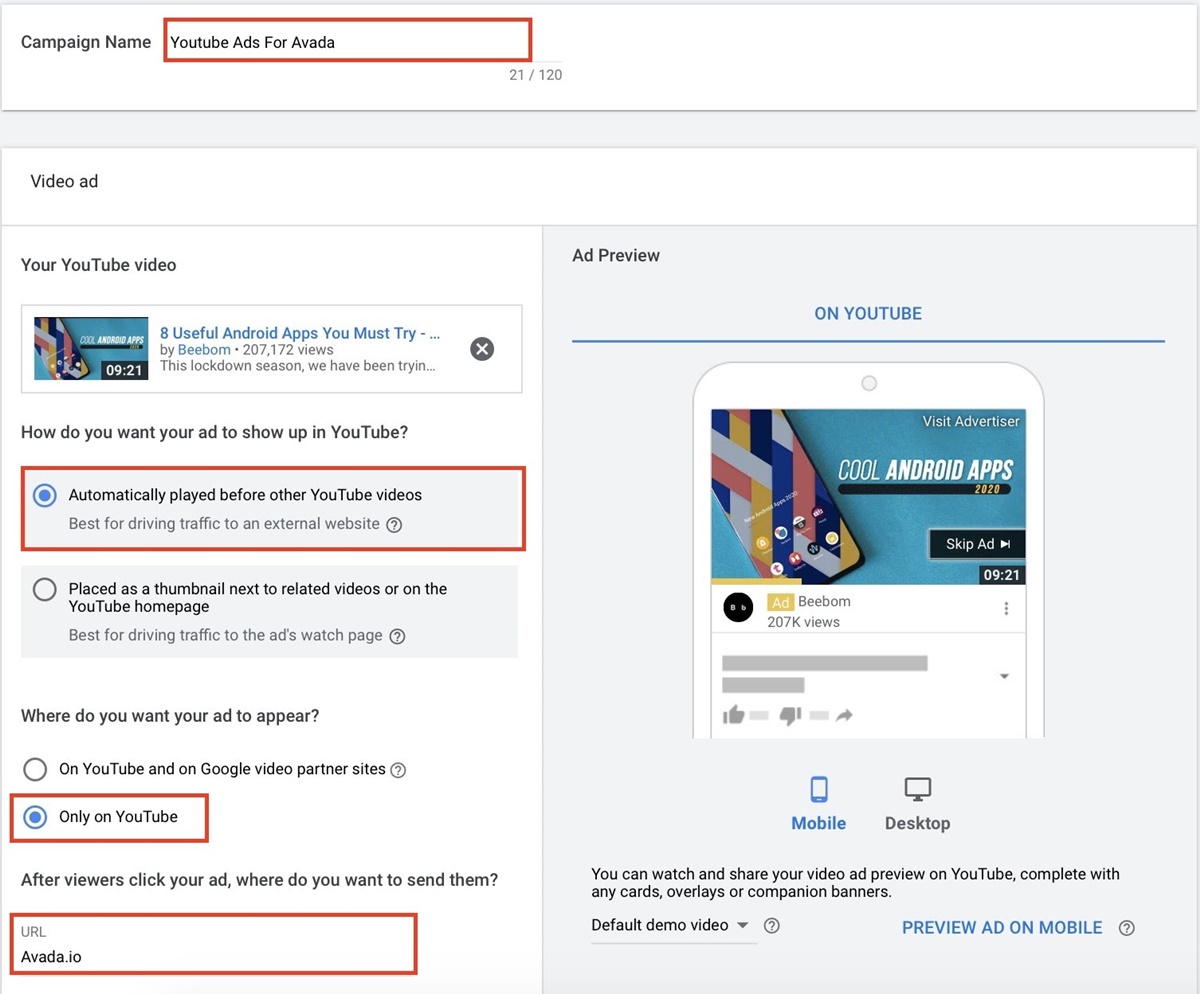
You will also be asked a few questions, such as the type of video ad you want, where you want your ad to appear, and most importantly, where you want to direct viewers who click on your ad. Location is the next step. Think of where your clients are and pick the locations you want to screen your ad in. I picked English-speaking countries for this ad:
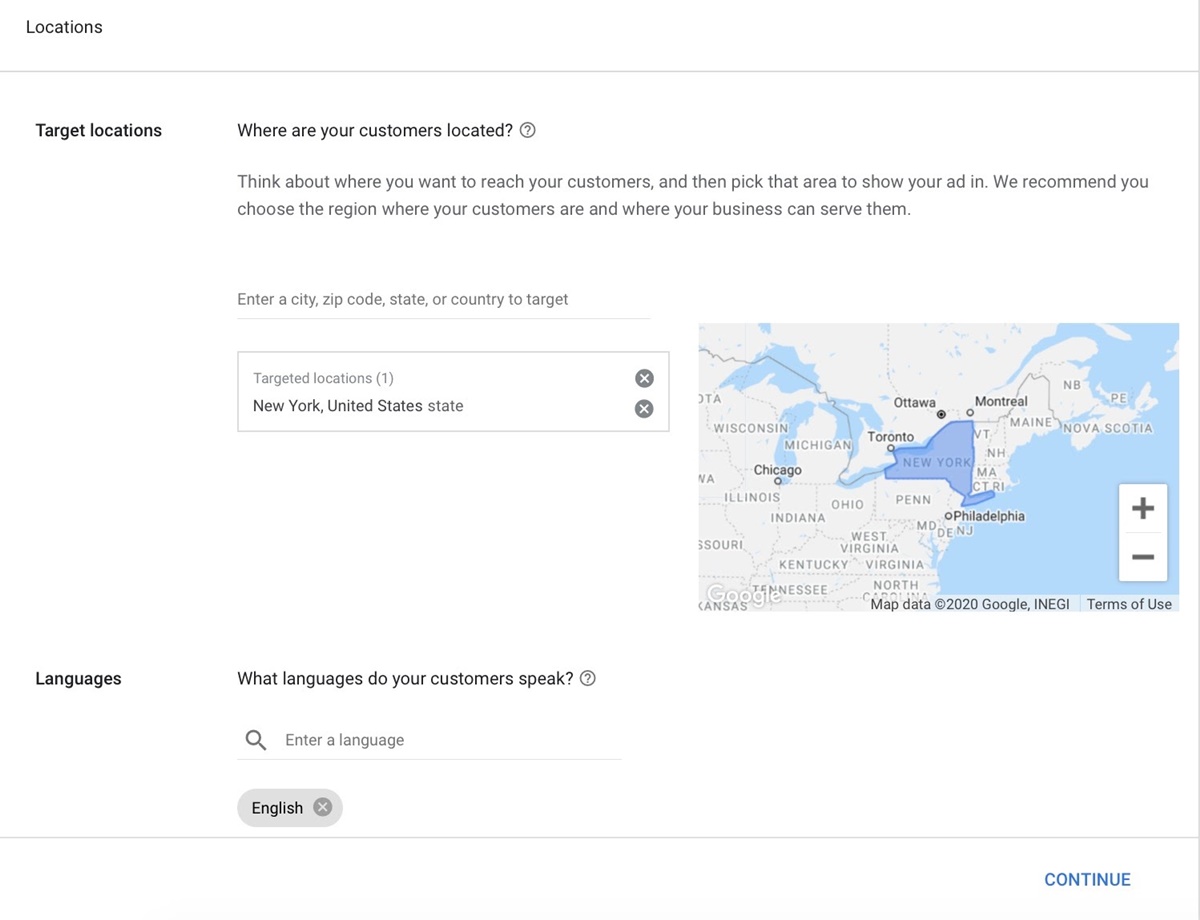
It’s a pretty large audience, so if you’re a small company, you can scale back to the town or area where you’re operating your company. The next focus is on your audience. Note down your demographics to represent your target customers:
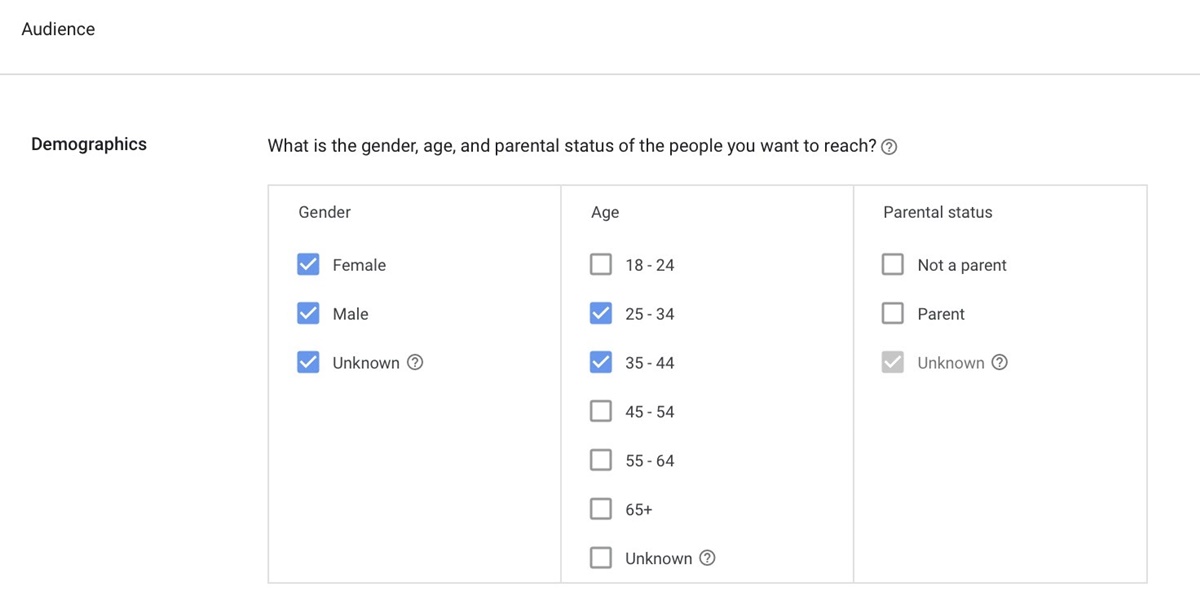
You can also select the ‘Customer Intent’ option. This part is optional, but it’s always better to make your targeting as tight as possible in order to get your ad in front of the right customers and ensure that your ad spending is made to its full potential.
When thinking about the intent of the customer, ask yourself: Why do my customers need to buy this product?
Then search for categories and keywords related to those products and your business. By adding this additional layer of context to your ads, you will boost the chances of getting the ad in front of customers who are actually looking for goods or services like yours. YouTube advises that you search all categories specific to your business:

Afterward, it’s time to work on the schedule. As we discussed above when we talk about prices, one of the great things about YouTube ads is that you know how much you want to pay. Remember that the average cost per view on YouTube is $0.20, and then factor it into your daily budget. YouTube recommends $20 a day for you:
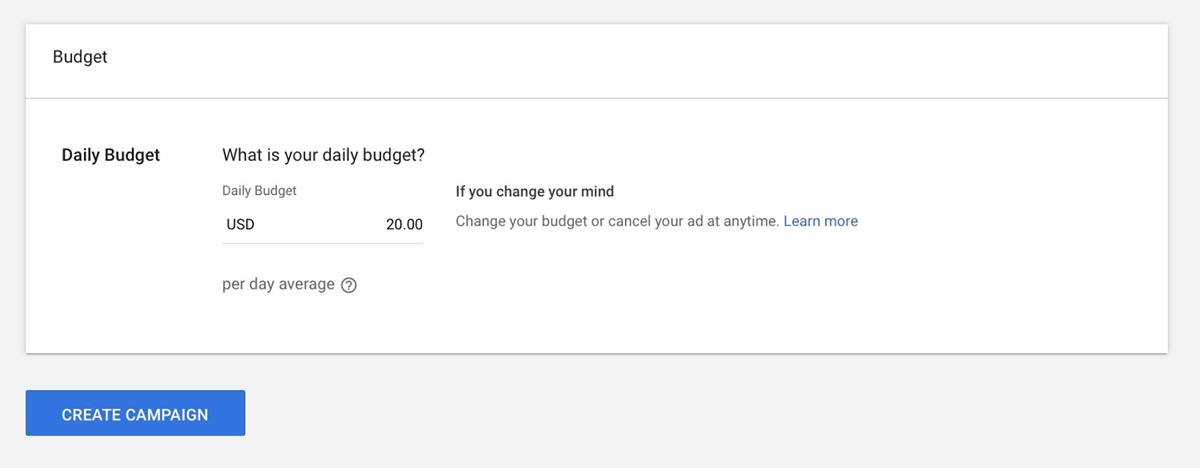
You will notice that, as you work your way through the targeting options, a column on the right will let you know your weekly target estimates based on your current targeting and budget:
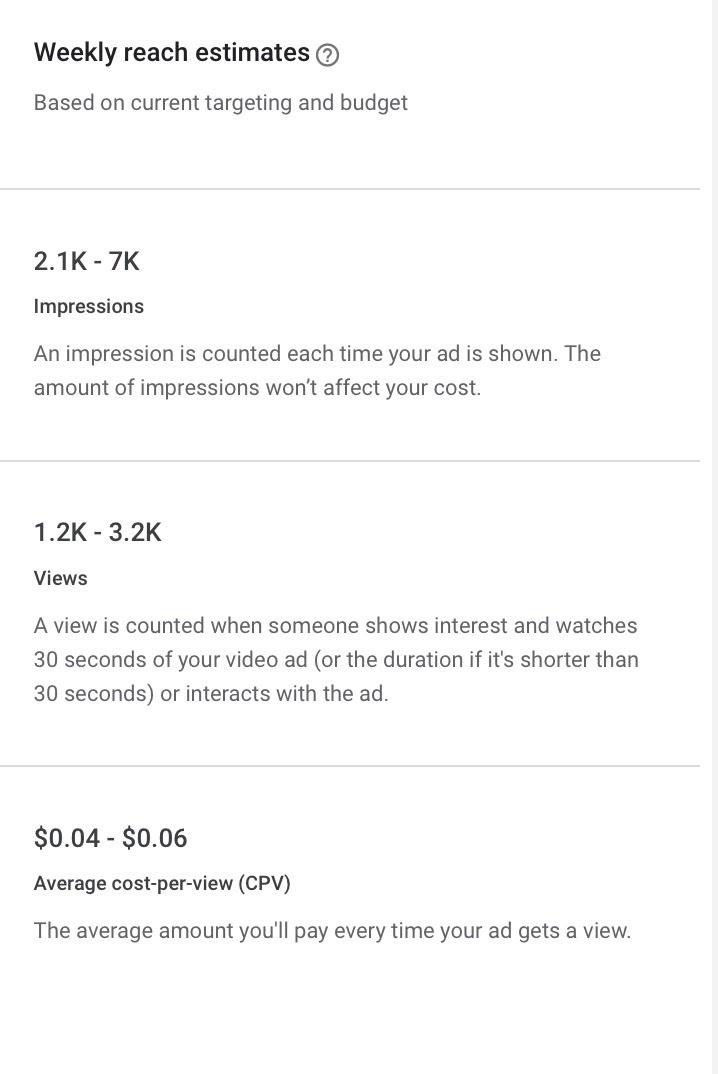
When you’re satisfied with your targeting and cost, it’s time to get going! Keep an eye on your results via your Google Advertising Analytics account. This way, you can learn from your mistakes or successes in improving your future YouTube ads.
Key metrics to keep track of your YouTube ad campaigns
As soon as your YouTube campaigns start running, you should be excited to check in and see how they’re performing.
YouTube recommends that advertisers link their YouTube campaigns to Google Ads for more insight. But if you sign up for this dashboard to analyze your ad, you might not have a clue what to look for — or if the results you ‘re getting are good compared to the industry average.
Below are the main metrics you need to watch in the Google Ads dashboard:
- Impressions: How many people have been introduced to your video?
- Views: How many people were watching past the 30-second mark?
- View Rate: What percentage of people viewed by the ad?
- Cost-per-click (CPC): How much do you pay on any click connection in the ad?
- Cost-per-view (CPV): How much do you pay on every 30-second view?
- Earned Actions: How many people have subscribed to your channel, visited your website, or liked your video as a result of the ad?
Five tips for running successful YouTube ads campaigns
Knowing how to advertise on YouTube is just the beginning, how you execute your YouTube ads is all that matters in the end. YouTube is one of the most competitive online platforms, so it’s important that you do everything you can to perfect your YouTube ad campaigns. Here are our top 5 YouTube Advertising tips.
1. Create a Compelling Ad
First of all, you need an intriguing ad. You can target all the best keywords and compete with the highest daily budget, but if your ad sucks then no one will click on it. You can ask yourself, “What’s going to intrigue my potential consumers so much that they’re able to abandon the video they’ve selected to watch to learn more about my company, brand, or service?
This is a tough question! You’ve got algorithms in place specifically to keep people on their site (suggested videos, autoplay, etc.) so you really need a lot of thought and effort to overcome that.
2. Know Your Audience
How well do you know your customers? You may know their estimated age, where they live, how much money they make. But do you know why they’re on YouTube? Do you know what they’re likely to be watching?
Think about the intent of your YouTube customers and try to match that with your ads. When you want to entertain your clients on YouTube, make your ad fun. If you need to be informed about them on YouTube, please inform your ad. Hint: a combination of the two will be much cooler!
You should take full advantage of YouTube’s highly advanced marketing tools to hit the users most likely to buy the product or service. You will target not only populations and keywords, but also by choosing affinity audiences.
There are groups of viewers who are grouped together by YouTube based on user patterns, such as search history and time on viewed sites, to help you relate to your target customers on a scale.
3. Become a Double Threat
It goes without saying, but don’t restrict yourself to only one form of ad. The more ads you run on YouTube, the more customers will be exposed to your product, brand or service. Take a second look at this screenshot:

Monday.com uses both the display ad and the skippable video ad concurrently, effectively multiplying their chances of engagement.
4. Do Keyword Research
It’s not enough to know what kind of keywords your ideal customers are looking for, but you also need to know how competitive and costly those keywords are. This is the equation to bear in mind:
High Volume + Low Competition = a great keyword
Use tools like Keywords Everywhere (which is an extension of Chrome) to build a list of keywords that are relevant to your ideal customers. It enables you to search for keywords directly on YouTube, giving you important competitive and cost-effective statistics:

And it even provides you with similar keywords that you might never have thought of:
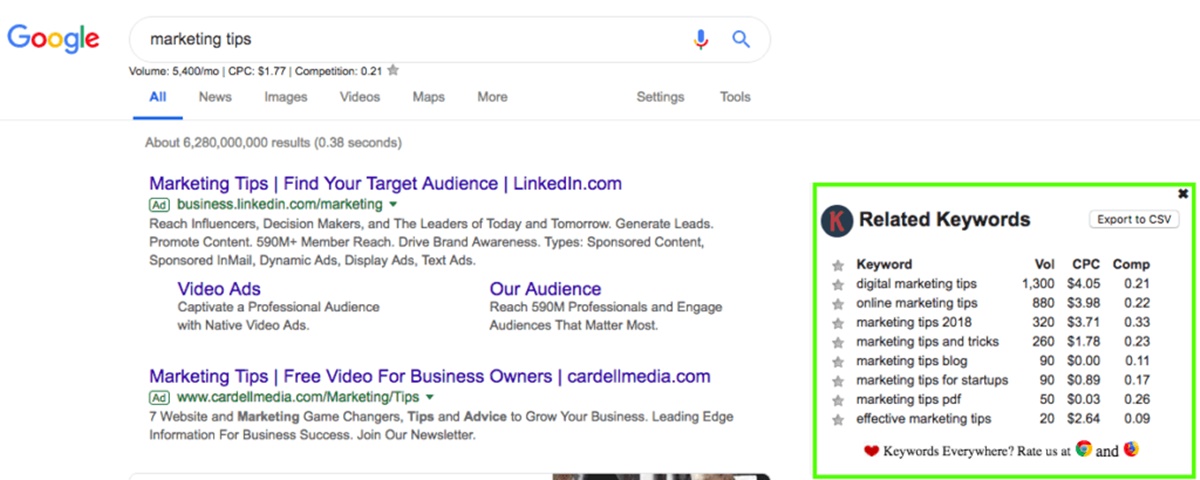
The rule of thumb is, for your ads to be profitable, you’re going to need your CPV to be low and your CTR to be high.
5. Conduct Experiments
When it comes to ads, you never want to standstill. There is always something that can get better or adjusted to improve the success rate of your campaign.
Experiment with various ad forms and call for action to see what inspires the customers most. You should also keep a close eye on your analysis to monitor the success of your campaigns.
If one keyword produces a great return, consider manually increasing the value of a click that you are bidding. If another keyword is flattering, make it a negative keyword (so you no longer have to waste money on it).
There is no right or wrong here, really. By constantly focusing on your ads, you can consistently develop them and achieve the best possible results from your YouTube advertising.
Read more:
How To Promote Your YouTube Channel & Video?
How to Embed a YouTube Video in Shopify?
Final Words
YouTube advertising has the potential to change your whole video marketing campaign, and there’s no excuse why it couldn’t become the biggest consumer acquisition platform in your business.
Remember to focus on quality, and always try to improve your ad ranking. Increasing the number of people you engage in through your ad content is key. You can’t hope to see the outcome if they don’t stick around to see your content!
New Posts

How To Set Up Google Analytics 4 For Your BigCommerce Store






